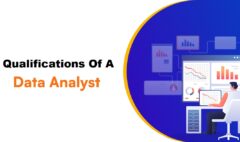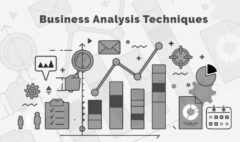Optimising Business Processes: Leveraging the Power of the Business Analysis Framework
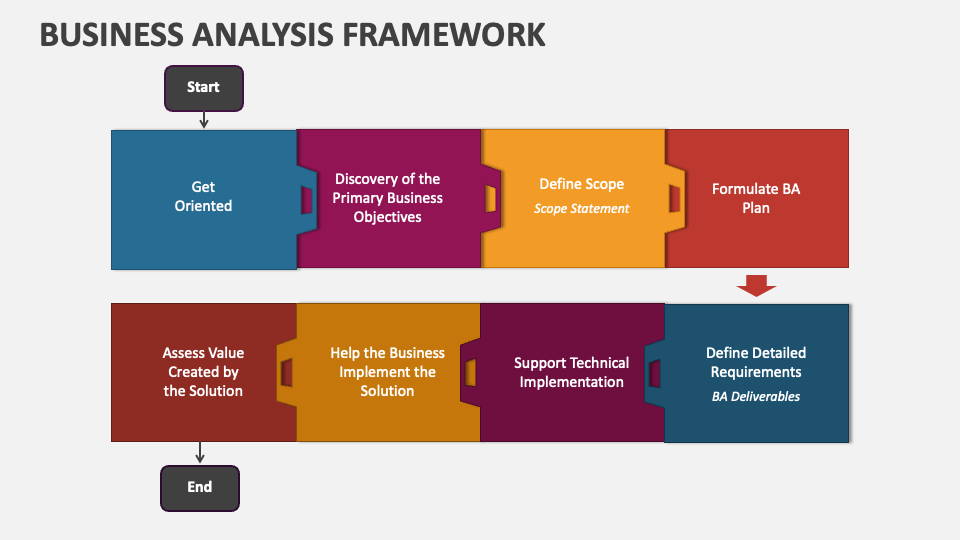
Optimising Business Processes: Leveraging the Power of the Business Analysis Framework
The global business landscape is in a constant state of flux, driven by technological advancements, shifts in consumer behaviour, and ever-changing market conditions.
In such a volatile environment, the role of business analysis can’t be overstated.
This is where the Business Analysis Framework comes into play, providing organizations with a structured approach to identify business needs, analyse requirements, design solutions, and evaluate outcomes.
In the complex and fast-paced world of business, the ability to optimize processes is crucial.
The Business Analysis Framework serves as a roadmap for making improvements at various operational levels, ensuring that each function aligns with the overarching business objectives.
It offers a standardized approach to tackle complex business problems and find effective solutions.
Moreover, the framework guides stakeholders through each phase, from identifying issues to implementing solutions, ensuring a consistent approach and efficient execution.
Phases of Business Analysis Framework
Requirement Gathering

Requirement gathering is a crucial initial step in the Business Analysis Framework.
At this stage, the primary objective is to identify what the stakeholders expect from the project, to understand their needs and limitations, and to clarify the scope and boundaries of the project.
This information forms the bedrock on which the rest of the project stages are built.
Business analysts often use tools such as surveys, interviews, document analysis, and SWOT (Strengths, Weaknesses, Opportunities, Threats) analysis to collect diverse yet precise information.
These techniques offer both qualitative and quantitative data, ensuring a comprehensive understanding of the project’s scope and stakeholder needs.
Let’s consider a real-life example to illustrate the requirement gathering stage in the Business Analysis Framework.
Suppose there’s a hospital that aims to optimize its patient management system. To kick off this project, a business analyst could begin by conducting interviews with various stakeholders, including medical staff, administrative personnel, and even patients.
This allows the business analyst to understand different perspectives and pain points within the existing system.
Additionally, a SWOT analysis can be performed to assess the current system’s strengths, weaknesses, opportunities for improvement, and potential threats or challenges.
The insights gathered will lay the groundwork for defining specific requirements that the new patient management system should fulfil, such as increased data accuracy, user-friendly interfaces, and quick data retrieval mechanisms.
The information amassed will guide the rest of the phases in the Business Analysis Framework, ensuring that the solution aligns well with the actual needs of the hospital.
The goal of this stage is not just to collect information, but to transform this raw data into actionable insights that can steer the direction of the project.
When executed well, this phase contributes significantly to the project’s success. It helps in narrowing down the project scope to something manageable and achievable, sets clear expectations among stakeholders, and aids in risk identification early in the project.
Thus, the Business Analysis Framework places a strong emphasis on the requirement gathering stage as a foundational step that has a domino effect on the quality, efficiency, and success of the entire project.
Analysis and Modelling
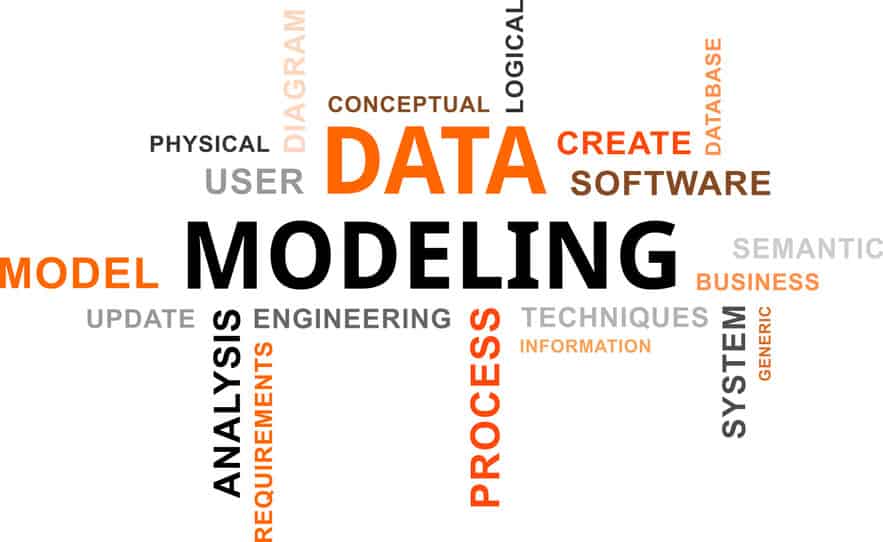
After the requirement gathering phase, the Business Analysis Framework moves on to the analysing and modelling stage. This is a pivotal phase where the business analyst synthesizes the collected data into actionable insights.
Techniques such as data modelling, workflow diagrams, and cost-benefit analysis are extensively employed here.
The purpose is to develop a detailed understanding of the existing business processes and identify the gaps or inefficiencies that need to be addressed.
By applying these methodologies, the business analyst can visualize the workflow, understand data dependencies, and weigh the benefits against the costs of potential solutions.
This not only validates the initial requirements but also gives stakeholders a clearer picture of what changes are feasible and beneficial.
Let’s consider a real-world example to elucidate this crucial stage in the Business Analysis Framework. Imagine a logistics company aiming to reduce delivery times.
A business analyst assigned to this project would start by examining the existing delivery routes through data modelling.
By using this technique, they could identify bottlenecks or inefficiencies in the current route structures.
Workflow diagrams might also be used to represent the sequence of steps in the delivery process, providing a visual means to spot delays or redundancies.
Cost-benefit analyses can then be conducted to evaluate different potential solutions, like investing in a new routing software or increasing the fleet size.
Each solution’s costs and benefits would be meticulously calculated to provide the company with concrete data for making an informed decision.
The analysis and modelling stage is invaluable for several reasons. It converts vague or complex stakeholder needs into structured information that can be easily understood and acted upon.
It provides a factual basis for proposed solutions, reducing the risks associated with assumptions or inadequate data.
Furthermore, this stage aligns stakeholders by providing them with a unified vision of the project’s goals and potential solutions, thereby minimizing scope creep and conflicts down the line.
Therefore, this phase is instrumental in ensuring that the rest of the Business Analysis Framework flows smoothly towards a successful conclusion.
Solution Design

In the Business Analysis Framework, the solution design phase is a critical juncture where the focus turns from problem understanding to problem-solving.
Having collected and analysed requirements, the business analyst now moves to designing potential solutions.
The techniques employed at this stage often include use-case modelling, wireframing, and feasibility analysis.
These methods serve to flesh out and visualize the potential solutions, making it easier to assess their viability and effectiveness.
Use-case modelling helps in understanding how different users will interact with the proposed system, while wireframing offers a preliminary view of the user interface.
Feasibility analysis quantifies how practical and beneficial a proposed solution is, given the constraints and goals.
Key deliverables that are usually produced at this stage include the Solution Design Document (SDD), which outlines the architecture and specifications of the solution, and the Business Process Model (BPM), which illustrates the workflow post-implementation.
Let’s dive into a real-life example to understand this phase of the Business Analysis Framework better.
Suppose a university is looking to revamp its existing online learning platform to provide a more interactive and user-friendly experience for students and faculty.
The business analyst involved would start by creating use-cases to understand the different functionalities that the platform needs to provide, such as video conferencing, quizzes, and discussion boards.
Wireframes might be used to visualize the new user interface, incorporating these functionalities.
A feasibility analysis would then be conducted to assess the financial, technical, and operational viability of implementing this new platform.
For instance, what would be the cost implication? Do the university’s existing servers have the capacity to support the new features?
All these analyses would be documented in the Solution Design Document and Business Process Model, providing a comprehensive blueprint that will guide the development team in the subsequent stages.
The importance of the solution design phase within the Business Analysis Framework cannot be overstated. It serves as the bridge between what is needed and how to achieve it.
Effective execution of this phase can significantly impact the success of the project, ensuring that the solution is not only viable but also optimized for maximum benefit.
This stage aligns the team around a unified vision, providing a clear roadmap that mitigates risks and paves the way for efficient implementation.
Implementation
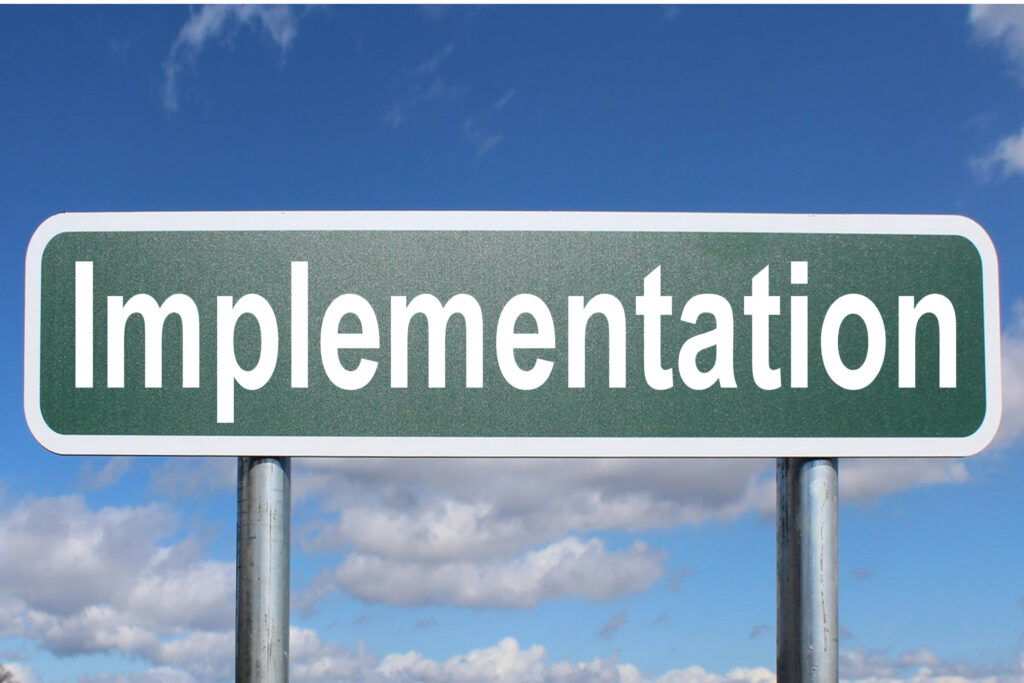
The implementation phase of the Business Analysis Framework is often termed as where “the rubber meets the road.”
This is the stage where all the preceding work—requirements gathering, analysis, and solution design—comes to fruition.
The business analyst transitions from a design role to a more oversight and advisory role, ensuring that the solution is implemented as envisioned.
The focus is on building and integrating the designed solution into the existing business processes.
The role of the business analyst at this stage is multi-faceted: they must work in close collaboration with project managers, developers, and other key stakeholders. Techniques like project management and risk assessment become fundamental at this point.
Project management methodologies, whether it’s Agile, Scrum, or traditional Waterfall, provide the structure for how the solution will be implemented.
Risk assessment ensures that any potential obstacles or challenges are identified and mitigated in advance.
To bring this to life, let’s consider a real-world example involving the implementation of a new Customer Relationship Management (CRM) system in a medium-sized sales organization.
In this scenario, the business analyst would first develop an Implementation Plan that outlines the steps, timelines, and resources needed for the CRM rollout.
They would work closely with the project manager to align this with the overall project schedule.
Concurrently, a risk assessment would be carried out to identify potential hurdles—perhaps data migration issues, or resistance from the sales team who are accustomed to the old system.
Measures would then be put in place to mitigate these risks, such as a comprehensive training program for the sales team or a phased data migration strategy that limits operational downtime.
In essence, the implementation phase is pivotal within the Business Analysis Framework for translating strategies and plans into real-world results.
It is the stage where theory is tested, and value is realized.
The business analyst plays a critical role in ensuring that the project stays aligned with the initial requirements and objectives, thereby facilitating a solution that is both effective and efficient.
This phase allows for the practical application of all preceding analyses, offering a tangible solution to the organization’s problem.
It’s the embodiment of the idea that a well-planned project is half done, with the other half being skilful and vigilant implementation.
Evaluation
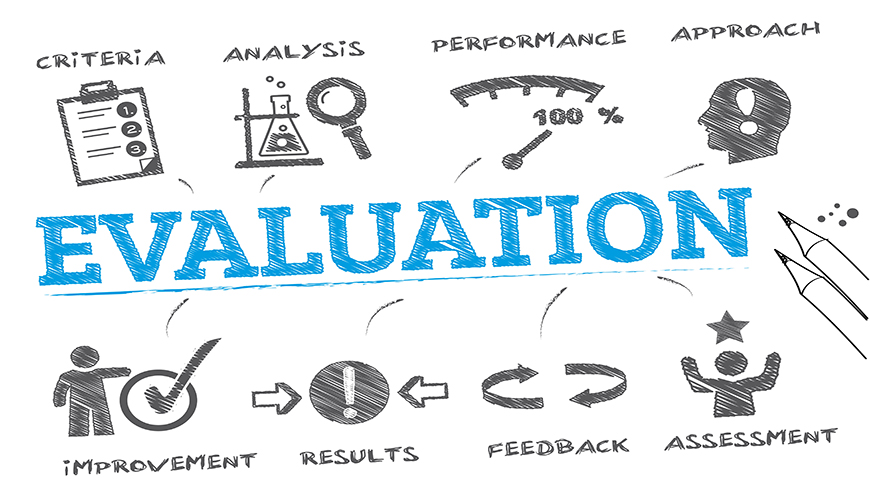
The evaluation phase serves as the concluding chapter in the Business Analysis Framework.
It’s not merely an end-point but a critical phase where the business analyst examines the outcome of all the preceding work.
Once the solution has been implemented, the imperative shifts to assessment—how well is the solution performing, and is it meeting its intended objectives?
This is the stage where the success or effectiveness of the project is measured.
Key techniques such as performance metrics evaluation and stakeholder feedback are deployed to gather data on the solution’s impact.
Performance metrics can range from quantitative measures like ROI, user engagement, and speed of task completion to qualitative metrics like user satisfaction and ease of use.
Stakeholder feedback involves gathering insights from those who interact with the new system or process, including employees, management, and perhaps even end-users.
To delve into a real-world example, let’s consider a hospital that has implemented a new Electronic Health Records (EHR) system.
The business analyst, in this case, would collaborate with the project manager and healthcare staff to establish key performance metrics for the EHR system, such as time saved in accessing patient records, accuracy of data, and staff satisfaction.
They might also conduct interviews or distribute surveys to doctors, nurses, and administrative staff to gather stakeholder feedback.
This data would be analysed to measure against the pre-defined objectives and success criteria outlined in the earlier phases of the Business Analysis Framework. If any gaps or areas for improvement are identified, the business analyst would recommend either tweaks to the current system or even a more substantial redesign if necessary.
The evaluation phase within the Business Analysis Framework is invaluable for several reasons.
Firstly, it provides an empirical basis for claiming project success or understanding shortfalls.
Secondly, the insights derived from this phase are instructive for future projects, offering a learning curve that organizations can ascend.
Lastly, it ensures accountability and return on investment, proving that the solution provides actual value to the organization.
By employing a systematic approach to evaluation, the business analyst adds a layer of rigor that is essential for organizational growth and continual improvement.
Benefits of the Business Analysis Framework
The Business Analysis Framework brings structure and clarity to the often-chaotic environment of business problem-solving.
It aligns various stakeholders under a single methodology, ensuring that everyone is on the same page.
This, in turn, speeds up the decision-making process and reduces the likelihood of errors or costly delays.
Most importantly, it sets the stage for continuous improvement, allowing organizations to adapt and grow in an ever-changing business landscape.
Conclusion
Understanding and implementing the Business Analysis Framework can be a game-changer for any organization looking to optimize its business processes.
The structured approach ensures that all aspects of a business problem are thoroughly explored, and the most effective solution is implemented.
In a world where businesses must adapt or die, leveraging the power of the Business Analysis Framework gives you the tools you need to not just survive but thrive.
In this ever-evolving business world, the Business Analysis Framework stands out as a versatile and effective tool for navigating complex challenges.
From small start-ups to large enterprises, the framework offers a structured methodology for identifying problems, exploring solutions, and implementing improvements.
It’s not just about fixing immediate issues; it’s about setting the groundwork for long-term success and sustainability.
Don’t underestimate the power of robust business analysis; embrace the Business Analysis Framework and drive your organization towards excellence.





